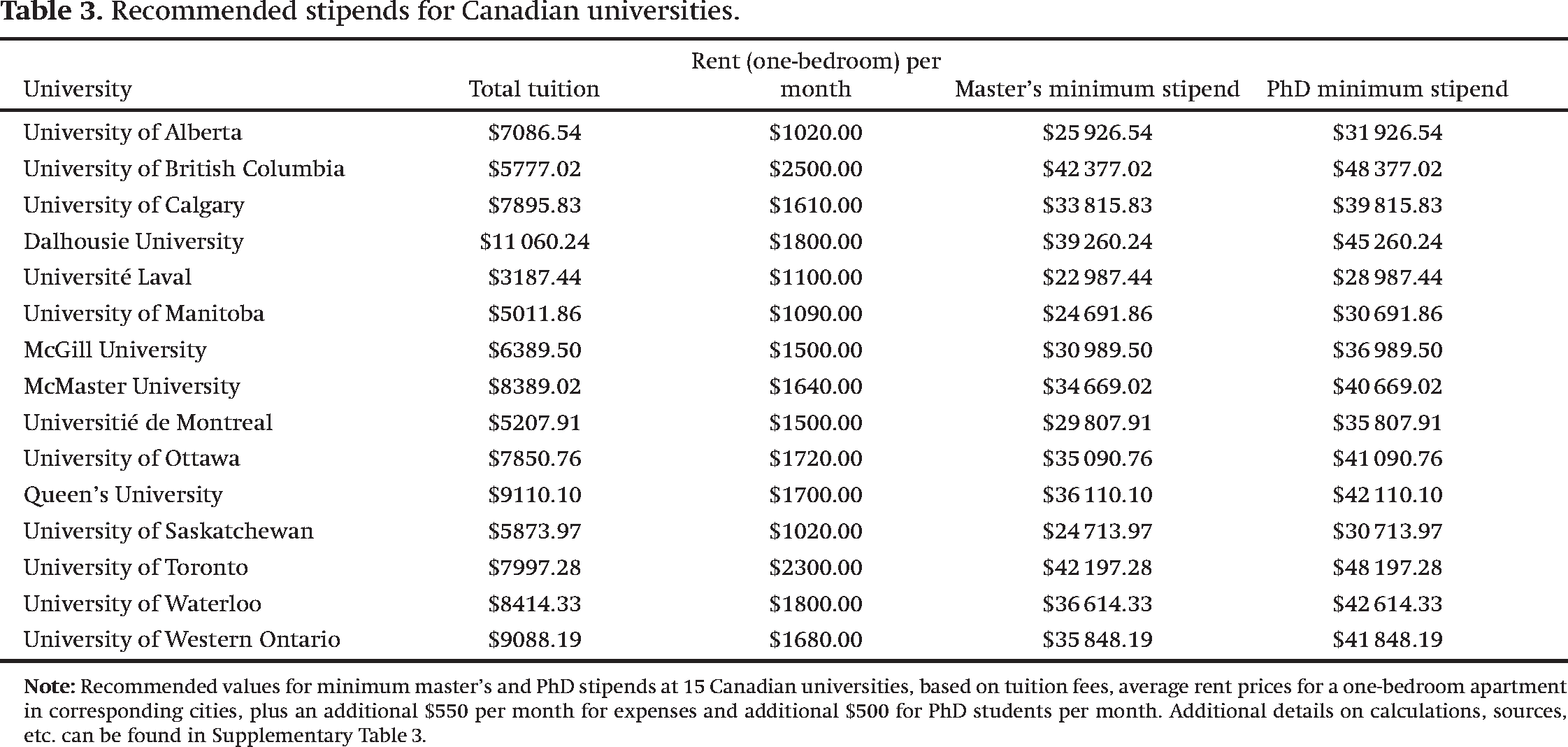


ASK 1: Scholarship and fellowship values have not kept pace with inflation
Graduate scholarship (CGS-M, PGS-D) values have not increased in 20 years. Postdoctoral fellowships (PDF) have had a modest increase in that same time. Since 2003, there has been 52% inflation (Source: Bank of Canada).
Recommendations from the SRSR committee of a 25% increase are too low and would only take values to 2015 in terms of inflation since 2003.
ASK 2: Graduate enrollment has doubled since 2003
The number of graduate scholarships (CGS-M, PGS-D, CGS-D) decreased in 2010, and has remained relatively steady since. However, in that same time period graduate student enrollment in Canada has doubled.
Increasing the value of scholarships is not enough - more need to be available to support graduate students.


Data from Statistics Canada

Number of NSERC postdoctoral fellowships

Number of doctoral graduates
ASK 3: Double the number of postdoctoral fellowships
The number of postdoctoral fellowships (PDF) has decreased 40% since 2010, while the number of doctoral students has doubled. Without an appropriate increase in postdoctoral fellowships Canada will not secure a supply of highly-qualified Canadians with leading research skills.
ASK 4: Most graduate students and postdoctoral fellows are paid through research grants
Increased pay for all graduate students and postdoctoral scholars can only be achieved by increasing the value of research grants along with scholarships and fellowships.
Individual research grants, such as the NSERC Discovery Grant, have been stagnant during the past 5 years, despite 17% inflation in the economy
Average NSERC grant 2016-2020


How would these costs breakdown over time?
Postdoctoral scholars are full time employees. The $45,000 stipend is there fore also taxed as income.
Based on a conservation cost of living (2 bedroom apartment, groceries, transportation) postdocs cannot live without going into debt in any major Canadian city.

.png)
What is a livable wage for graduate students? Laframboise et al. (2023) provide an estimate for 15 Canadian universities.

Fifty years ago, Canada had the second-highest labour productivity among the G7. Today, we have the second-lowest, ahead only of Japan. Canada has the lowest spending on research and development among the G7, with no increase in the last 20 years. In 2017, the Naylor Report noted Canada’s declining investment in research and development.
Canada’s federal graduate scholarships and postdoctoral fellowships are not competitive among international comparators. For example, in the USA, the equivalent doctoral scholarship provided by the National Science Foundation is valued at $65,000 CAD, compared to the $21,000 for the PGS-D and $35,000 for the CGS-D. Similarly, the NSF postdoctoral fellowship is valued at $106,000 CAD, compared to the $45,000 offered by the Tri-Agency fellowships.
.png)
A 2016 report found that one in four STEM graduates left Canada for work, citing higher pay as a top reason. As of 2019, the McGill Trace Report estimated that 38% of all newly trained Ph.D.s in the humanities, social sciences, and fine arts Canada leave for better opportunities in other countries, mostly the USA and Europe. A 2023 Globe and Mail article highlighted the stories of graduate students who have left research or chosen to do their postdoctoral research in other countries because the financial situation in Canada was untenable.
When these individuals leave, that investment in them is lost, including the loss of future opportunities and innovations that would have been gained by retaining these individuals in Canada. Given 15% inflation since 2019, and an increasingly competitive market for talent attraction and retention, it is likely that Canada is now losing over $1B annually in lost talent investments.
.png)














